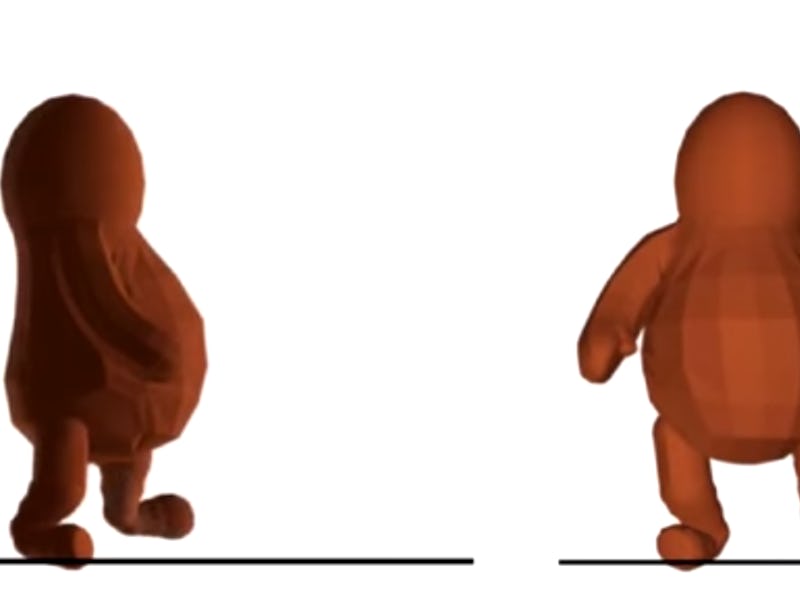
Never one to sidestep the spotlight, the House of Mouse kicked off the IEEE International Conference on Robotics and Automation today with the announcement that it had begun the process of creating a walking peanut. Disney Research has long been tinkering with robotic frames in an effort to bring the company’s billions of dollar worth of intellectual property to the street (presumably while CEO Bob Iger shouts about letting his creation live). The announcement signals real progress — the researchers point out that locomotion tech and arm tech are basically the same — but should also reassure Orlando’s professional Plutos, who can caper about with an alacrity engineers just can't recreate.
The Pittsburgh-based research team used 3D-printed links and servo motors to simulate the comically awkward and endearing gait of the animated peanut in an effort to imbue their bot with the charm of an animated character. Unlike Honda’s Asimo, which has a stiff-legged stormtrooper gait, the peanut has a sort of bowlegged stumble that speaks to his legume-ish lovability. But physical imperfection, which is a sort of beta-level zaniness from a Disney perspective, is harder to build than physical prowess. "It's important that, despite physical limitations, we do not sacrifice style or the quality of motion," researcher Katsu Yamane explained in the initial announcement.
In other words, Disney is absolutely determined to reverse engineer joy. Good for them. Just don’t be surprised when the next major blockbuster is the touching story of a kneeless, elbowless droid who overcomes his physical limitations to win glory at the Robot Games.